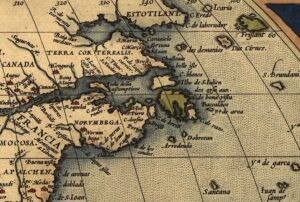The Ciudad de los Cesares has meandered in and out of the Argentinian imagination for centuries. This City of the Caesars was a mystical place nestled deep in Patagonia, flanked by mountains of gold and diamonds. The legends claim that native giants or white, blond-haired people occupied the city, speaking unknown languages. Explorers, conquerors, and priests have searched for it, hoping to return with immense wealth or to discover a lost utopia.
Background
The city bears multiple names: The Wandering City, City of Patagonia, Lin Lin, and Trapalanda. “Of the Caesars” comes from Fransisco Cesar, who embarked on a 1528 expedition to find the city and named it after himself.
The city’s origin story depends on who you talk to or what you read. Some suggest that survivors of a Spanish shipwreck founded the city. Another legend credits disillusioned settlers from the colonies of Nombre de Jesus and Rey Don Felipe.
The variations of the tale have at least two consistent details: the city and its inhabitants. Almost all describe them as white-skinned, blue-eyed, blonde-haired, speaking an unknown language, and wearing three-cornered hats. Some speculate that these descriptions refer to the legendary Patagonian giants from the Straits of Magellan.
The city was allegedly a sight to behold. It sat beside a great blue lake, with huge buildings made of silver, streets of stone, and a seemingly endless supply of precious stones and metals.

A blue lake supposedly bordered the city. Photo: Galyna Andrushko/Shutterstock
Origins
Spanish explorer Juan de Solis supposedly discovered the city in 1515. While exploring near Buenos Aires, natives attacked him and his men. The survivors fled into the Patagonian wilderness and found a city of white people like them. Over a decade later, in 1528, Fransisco Cesar claimed to have rediscovered the place. He spoke of a city made of silver, gold, and diamonds. Cesar was participating in an expedition led by Sebastian Gaboto in search of Sierra de la Plata, another legendary area made of silver. But Cesar branched off on his own to find his own treasure hoard instead.
In 1540, a colonizing expedition bound for Patagonia came to grief in the Strait of Magellan. In Chile, more than two decades later, survivors of the shipwreck came forward with stories of a city of riches, founded by themselves and local women.
Their stories encouraged further searches. In 1604, Hernando Arias de Saavedra launched an 800-man expedition. They spent more than three months in Patagonia, battling hunger, disease, and general malcontent before abandoning their search.
In 1707, a mysterious figure named Silvestre Antonio Roxas came forward with detailed descriptions of the city. He was convincing enough to persuade benefactors to fund his quest for it. However, his expedition failed to turn up anything relevant.
In the 1600s and 1700s, Jesuit missionaries became obsessed with the city. In the late 1670s, Italian priest Nicolas Mascardi searched. Another Jesuit, Jose Garcia Alsue, explored Queulat National Park in 1766. The priests believed that the city could be heaven on earth.
Theories
Some postulate that natives cunningly led their colonizers on a wild-goose chase. Rather than occupying their lands and enslaving their people, the Europeans wasted time navigating the dangerous Patagonian interior. Stories of Ciudad de los Cesares bear a striking similarity to those of El Dorado, Paititi, and the Lost City of Z. It is possible that indigenous peoples crafted these false narratives in the hopes of leading the Europeans away from their homes.
Modern evidence
One far-out contemporary theory suggests that the Knight’s Templar built Ciudad de los Cesares to safeguard the Holy Grail. The theory seems to have been conjured up by a group called the Delphos Foundation. Rather than a city, they see Ciudad de los Cesares as a huge fortress. The group launched several expeditions to find the fortress.

Some believe that Ciudad de los Cesares has a Templar connection. Photo: Sergey Klopotov/Shutterstock
They believe that the fortress is most likely an archaeological site near Las Grutas in the province of Río Negro. The site housed objects like mosaics, coins, and rocks with Templar motifs. The Delphos Foundation points to a map from 1865 created by cartographer Juan Antonio Víctor Martin de Moussy, along with several publications from the time, that confirm this site was once a fortress.
The takeaway
As yet, there is no compelling evidence that the city of Ciudad de los Cesares ever existed. The various theories share little in common and there are no obvious leads for modern explorers to chase. Ciudad de los Cesares looks set to remain a mystery.






